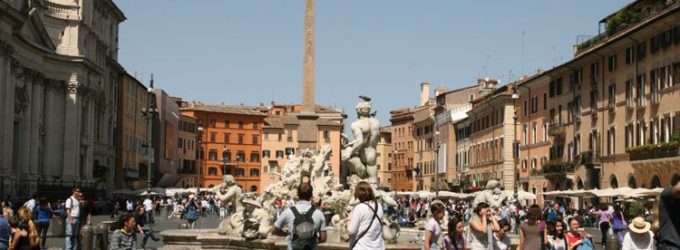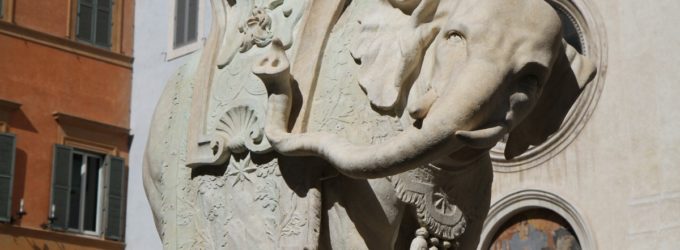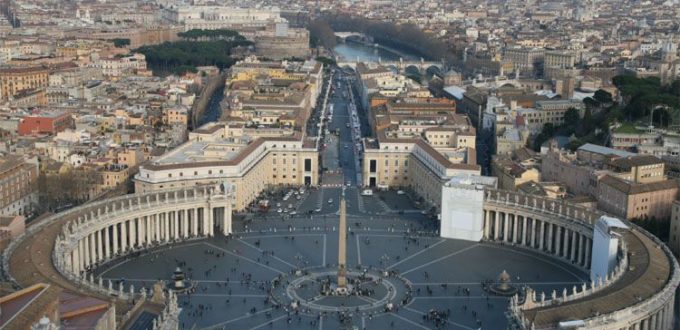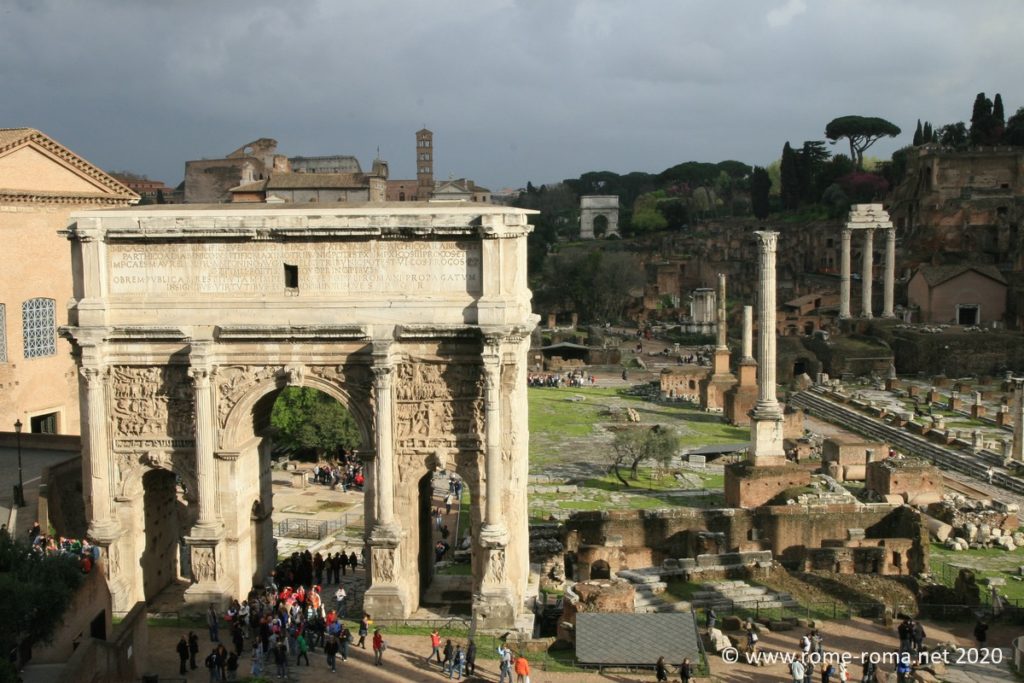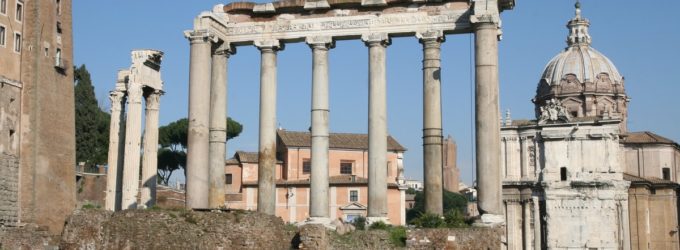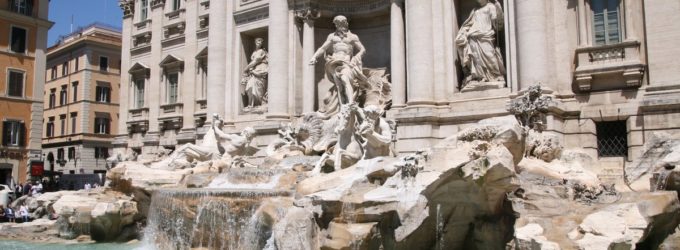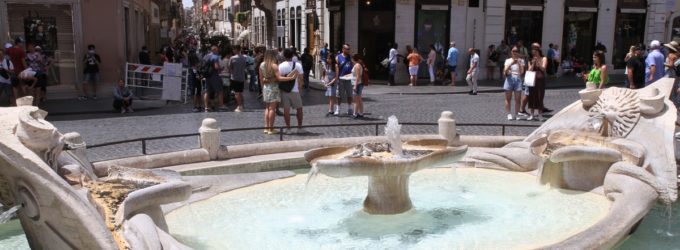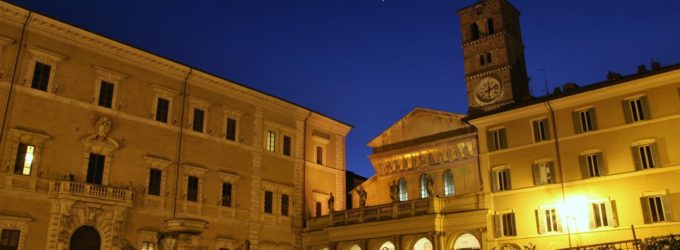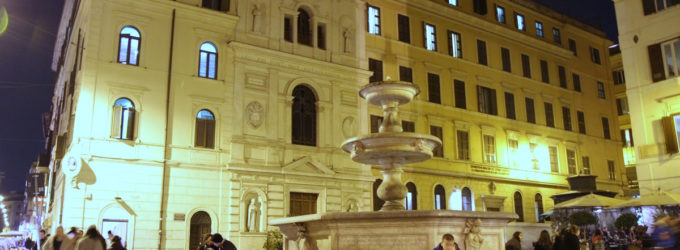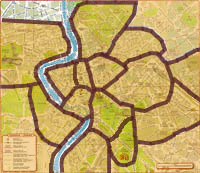
The quarters of the historic center of Rome are mostly “intra-muros,” meaning located inside the Aurelian Walls, the large Roman enclosure built in the 3rd century AD. Each one has its own history and character.
Historically, the city has been divided since the Middle Ages with the Rioni, which we mention occasionally but which are not always relevant groupings from the visitor’s perspective.
This division evolved over time. Originally Rome developed among 7 primary hills, with the sacred Capitoline to the west near the Tiber. Enclosed between these hills, the Roman Forum stretched eastward, with the Palatine and Caelian to the south; the Quirinal, Viminal, and Esquiline to the north.
To the northwest of this original center, the vast Campus Martius was urbanized from the end of the Republic, then Augustus defined the regiones of the city to include the urban extensions beyond the Servian Walls of the time, on the hills and beyond the Tiber with the Transtiberium. Later, the Aurelian Walls roughly enclosed these regiones, origins of the medieval Rioni.
Aventine and Testaccio
The Aventine hill, inhabited by the plebs under the Republic, then occupied by patrician villas under the Empire, is now a very quiet residential district with a charming garden, its panorama, and the basilicas of Santa Sabina and Santa Saba on the small Aventine. It was also — and still is — the domain of the Knights of the Order of Malta.
Testaccio, on the other side of the hill, is a popular and youthful district, frequented in the evening for its bars and venues.
→ See Aventine and Testaccio district
Borgo, Prati and Vatican
Just northwest of the historic center of Rome, on the western side of the Tiber, the Borgo precedes the Vatican State with the large square and the St. Peter’s Basilica in Rome, the Catholic heart of the world. To the north, Prati is a district stretching over a plain, with its public institutions, offices, and residential buildings, well equipped with venues and restaurants.
→ See Borgo, Prati and Vatican district
Campo, Giulia and Ghetto
In the historic center, between the Capitoline and the Tiber, this plain urbanized since antiquity underwent significant Renaissance developments, with many prestigious palaces, beautiful streets, and churches along the Via Giulia thoroughfare, or notable squares like Campo de’ Fiori. The small pedestrian Tiber Island lies just opposite the charming historic ghetto, which has maintained a Jewish population.
→ See Campo, Giulia and Ghetto district with Tiber Island
Caelian Hill and Baths of Caracalla
The Caelian, another of the original Roman hills, was occupied by noble residences, temples, and a military barracks under the Empire. Nowadays, housing is scattered and the area is occupied by green spaces, hospitals, and some churches. Below, the Baths of Caracalla have preserved the majestic structures of these grand baths.
→ See Caelian and Caracalla district
Ancient Center (Forum, Capitoline, Colosseum)
This city zone is the densest in ancient buildings. Sacred hill of antiquity, the Capitoline remains the heart of Rome, with its splendid square and museums, overlooking the plain of the Forums that extend to the large Colosseum. The Palatine is the hill where legend places the foundation of Rome, where sumptuous imperial villas were built. South of the Piazza Venezia and the grand Vittoriano, the Forum Boarium runs along the Tiber where the port was located and joins the famous Bocca della Verità.
→ See Ancient Center district
Campo Marzio and Ludovisi District
The plain of the Campo Marzio originally served as a training ground for Roman armies, then was urbanized during the Empire. It is the northern part of the historic center, with its Renaissance streets, rich in palaces, churches, and squares like Piazza del Popolo and especially Spanish Steps. These lie below the Pincian Hill and the large park of the Villa Borghese.
→ See Campo Marzio, Villa Borghese and Ludovisi district
Lateran and Esquiline
From the Caelian Hill to the Esquiline Hill, southeast of the Colosseum, lies the zone of the Basilica of St. John Lateran, the cathedral of Rome, which then extends over the Esquiline along the Aurelian Walls to the Porta Maggiore, and in the Termini area up to the cosmopolitan Piazza Vittorio Emanuele.
→ See Lateran and Esquiline district
Monti
Occupying several hills of Rome—including the Esquiline, Oppian, and Viminal—the narrow streets of Monti are lively and animate in the evening, frequented by both tourists and Romans. In Roman times, this was the Subura, the lower part of Rome. In this district, well supplied with many bars and restaurants, one can also discover very beautiful churches.
→ See Monti district
Esquiline with Termini and Repubblica
On the Esquiline Hill, the area around the Termini train station is more popular and cosmopolitan than the historic center. It contains grand buildings such as the Basilica of St. Mary Major and the Baths of Diocletian, near the modern Piazza della Repubblica which connects to the Viminal Hill.
→ See Termini district on Esquiline and Castro Pretorio
Navona and Pantheon
This is probably the most densely built area of Rome’s historic center, featuring architecture from all periods, especially the Renaissance and Baroque, but also antiquity, with its remarkable squares including the incomparable Navone Square, prestigious palaces and churches, and the extraordinary Pantheon, almost identical to its original state. Walking through this maze of streets is always enjoyable, even though some are constantly trodden by tourists.
→ See area around Navona, area around the Pantheon
Trastevere and Janiculum
On the other side of the Tiber, the Trastevere district was long somewhat neglected and has always maintained its own identity. With its typical alleys and small shops, it has become trendy over the last twenty years for spending evenings there. Pleasant small squares, pizzerias, and welcoming restaurants contribute to the charm of this neighborhood, which is separated from its quieter eastern part by the Viale Trastevere. To the west rises the Janiculum hill, known for its viewpoint over the city.
→ See Trastevere area, including the Janiculum
Trevi and Quirinal
The Quirinal hill, one of the original hills of the city, is occupied by the large presidential palace and several churches. On its slopes and below, one finds other fine palaces, museums, churches, and many shops, as well as a major city attraction with the highly Baroque Trevi Fountain
→ See Quirinal and Trevi area

